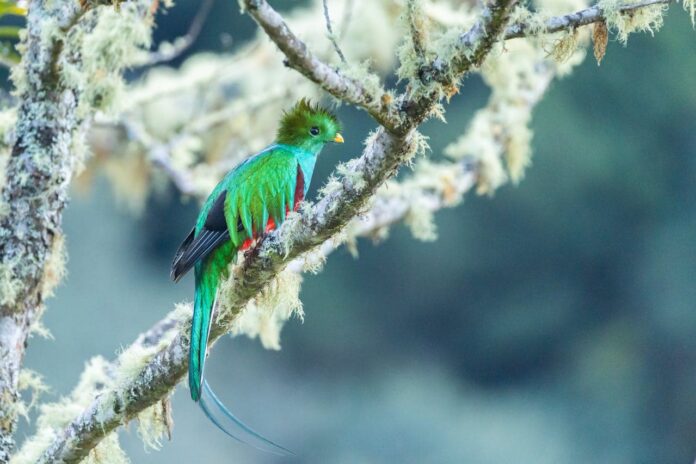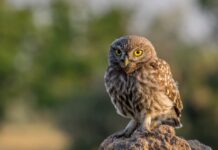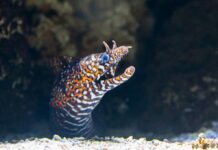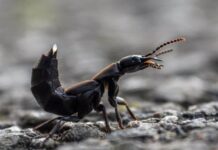Cute birds refer to the ones that are adorable and colorful to look at. There are many bird species out there in the world, but not a majority of them are lovely enough. So I scoured the internet to search for just the cutest birds for our list today. You will find only 10 of them below so feel free to take a look. Let’s see which one of them you think is the most adorable bird that you like the most.
1Asity

Endemic to and found only in Madagascar, these tiny fluffy balls are super adorable and unique. The special thing about asity is that these forest birds have sexually dichromic plumage. Male asities have brightly colored wattles (blue or green) around their eyes that are most conspicuous during the breeding season. On top of that, those wattles get their color from arrays of collagen fibers which is a unique pigmentation method. At the same time, males are brighter and larger while females are much duller in color.
These cute birds prefer living in rainforests but you can also find them in dry deciduous forests and humid valleys. In those habitats, they feed on berries, fruits, insects, and nectar from flowers. Thanks to their long down-curved bills and tubular tongues, extracting nectar is not a problem for them. There are 4 species in this total, but one of them which is the yellow-bellied sunbird-asity is listed as Vulnerable. The common threats to this species are fragmentation and habitat loss. Another species, Schelegel’s asity, is considered Near Threatened due to similar reasons.
2Blue-Naped Mousebird
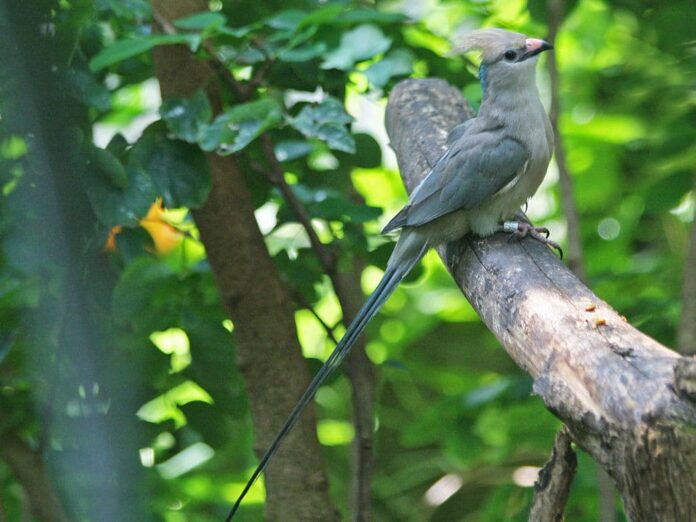
While many people think gray is a boring color for animals, this one right here can prove otherwise. The blue-naped mousebird is a common pet bird species that live in drier regions of East Africa. This species received its name from its habit of running along tree branches or on the ground which resembles a scurrying mouse. Adult blue-naped mousebirds have a crested head with a turquoise nape, an ash-brown-grayish body, and a black-and-red bill. As juveniles, they lack the blue on the nape with pink facial skin and greenish bills. The cool thing about these cute birds is that they have pamprodactylous toes that they rotate to face forward at will.
Their common habitats are dry regions and semi-desert, especially bush and open wooded areas with an extremely large range. Where they live, these cute birds feed on berries, buds, flowers, fruits, leaves, nectar, and seeds. Sometimes they may also eat soil and swallow pebbles to assist in grinding up vegetation to facilitate digestion. As highly social birds, they are often seen in noisy flocks as they dust bathing, engaging in mutual preening, or foraging together. While birds are either monogamous or polygamous, this one is both which is very different. The threats to their population at the moment are overconsumption and poaching.
3Cuban Tody
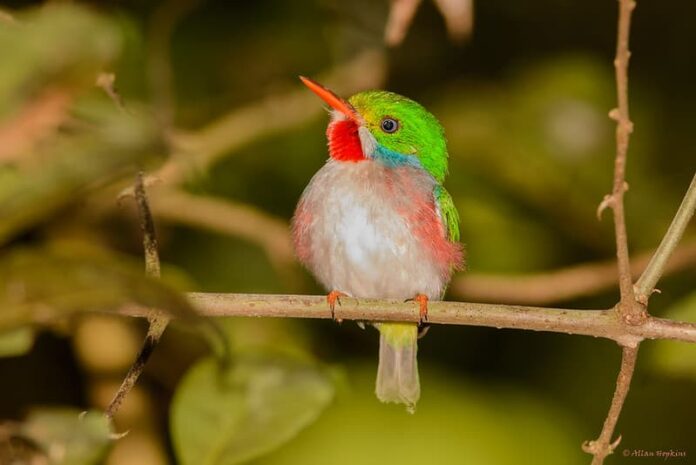
A large head on a small body in birds always makes them look adorable, and this is an example for that. Cuban tody is a tiny bird with a combination of many different bright colors on its body. A Cuban tody has a green upper body, wings, and tail with a red throat and mandibles. At the same time, it has blue patches on either side of its cheek with pink flanks. Despite being colorful, this coloration helps them to camouflage in their surroundings of flowers and plants. These birds live in a variety of terrain, but they are very common in shaded areas next to rivers and streams.
Cuban tody is very adaptable, and they thrive in pretty much anywhere from thickets and wet environments to the woods. They usually dig tunnels into embankments or hollow tree trunks to create their nests in early September. Because they are incredibly fast and so good at hiding, coming across one in the wild is a rare opportunity. This bird species is a very vigorous forager that usually hunts at least 9 feet off the ground. The main diet of Cuban today consists of small fruits and lizards, and spiders. They are not an endangered species, but the predators of these cute birds are only 2 which are humans and mongooses.
4European Roller
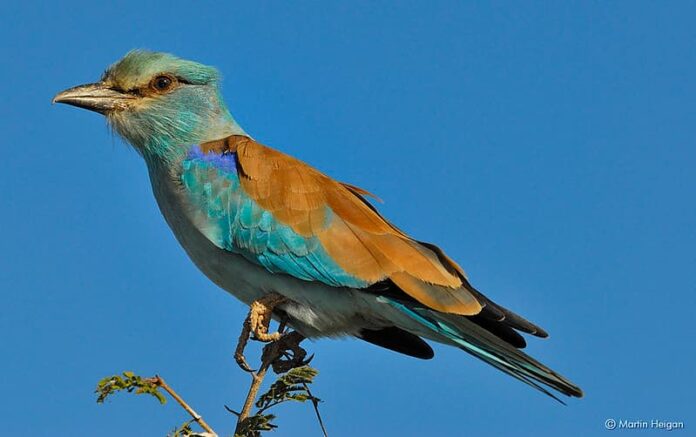
When it comes to aesthetic birds, the European rollers absolutely tick the boxes to this definition. The European rollers are medium-sized birds with brightly colored plumage of brilliant blue contrasting with a warm brown back. Being gorgeous is not the only thing that these birds are famous for. Their reputation lies in their incredible aerial acrobatics during courtship or territorial flights of the males. During the performance, the males will fly above the tree in which he has located the nest. There, he darts up, turns somersaults, and turns on his side before plummeting down again.
Just like the name suggests, these birds breed and live in Europe but their ranges also extend to Central Asia and the Middle East. The charming and cute birds prefer dry, open, and warm areas with scattered trees, especially lowland areas. European rollers are generally solitary birds that hunt during the day in a sit-and-wait manner. You can see them perch prominently on posts, overhead wires, or trees, looking for potential prey. Their meals consist of large insects, rodents, and small reptiles, and the nestlings eat bush crickets and grasshoppers. Once they found a mate, these monogamous birds will live in their nest in a cliff hole or unlined tree.
5Guianan Cock-Of-The-Rock

As for this one, the beauty all goes to the males because the females of this species don’t look as gorgeous. Male Guianan cock-of-the-rocks are bright orange in color with orange half-moon crests and a brown band on their heads. The crest remains erect and covers the bill, and their legs and skin are also orange in color. As for the wing bars, they are black and white while the tails are black. Female Guianan cock-of-the-rocks have a drab brown color, black bill with a yellow tip, and smaller crests. You can find them in lowland forests near rocky areas where they build nests and feed. As for food, they on berries, fruits, large insects, and small amphibians or reptiles.
During the day, the males spend their time at a communal lek with as many as 50 other males. They either participate in a combat display or a dancing display while the females are watching. The females prefer males whose territory is near the center of the lek because that shows the dominance of the males. Even more interesting, dominant males may take on young and low-ranking males are apprentices to help their chances to breed. Because they are polygamous, a successful male will mate with many females during the breeding season. Females raise the chicks in nesting sites near the males’ leks without assistance from the males. Also, it is common to see the females of this species build nests together for more protection.
6Guinea Turaco
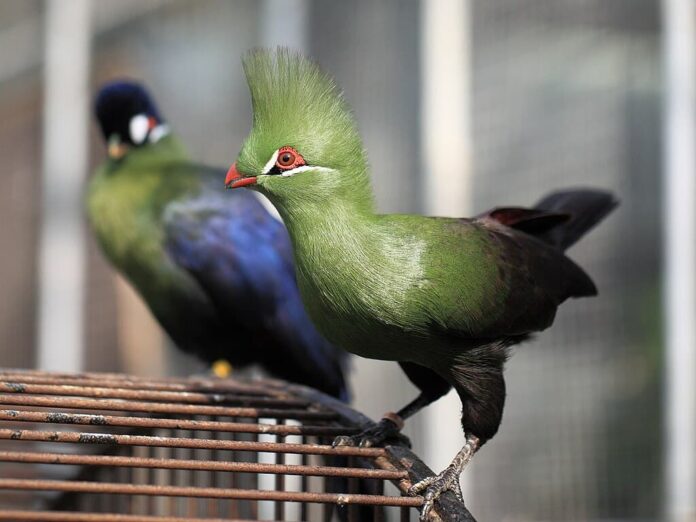
Is there a bird that a rock music lover can have? Maybe the Guinea turaco is what you are looking for, a great bird with a tall crest that looks like a mohawk. Guinea turaco is a medium-sized bird with red eyes and beaks along with a long tail. Around their eyes are bold white and black markings that highlight the details even more. The plumage of these birds is glossy, and their striking crests may have a purple or red tip. This is is the only bird species to possess true green and red color pigments due to copper. In fact, you can stir a glass of water with a red turaco feather to turn the water pink!
These birds have an extremely large range in Western Africa where they live in forests and savanna areas. Their diet includes acacia, figs, flowers, fruits, seed pods, snails, termites, and highly poisonous berries. At the same time, they are also a source of food for many predators in the regions. Because they are so abundant, their feeding habits are very destructive to farming operations which makes them pests. However, Guinea turacos do aid forest renewal through seed dispersal when they feed. These hardcore-looking birds are monogamous, and the parents take turns incubating the eggs. Once the eggs hatched, other flock members also help the new mother to care for the chicks.
7Kingfisher

A list of adorable and cute birds is incomplete without the presence of the kingfisher, the colorful and stunning tiny bird. This bird species is famous for its bright and stocky bodies with striking colors and markings like dashes, speckles, or splotches. Most species have a combination of different colors such as bright blue, gold, green, red, or turquoise. The awesome thing is that these adorable birds also like to keep clean by diving into the water to bathe. There are around 90 different kingfisher species in the world on all continents except Antarctica. In their ranges, these birds live in deserts, along lakes, river banks, forests, open woodlands, and seashores. The kingfishers have dagger-shaped bills that they use for capturing food.
Kingfishers eat mainly fish, but they also feed on aquatic insects, freshwater shrimps, reptiles, spiders, and tadpoles. Kingfishers have fast and direct flying, and they often close their eyes as they dive into the water. Before diving, a kingfisher bobs in the head to accurately judge the depth of the fish for a precise catch. They are most active during the morning and evening, and they will hunt in the afternoon if it is not too hot. These tiny fur balls are territorial, and some species defend their territories vigorously. Most kingfishers are solitary, and they only pair up and mate during the breeding season. Their main predators are birds of prey, cats, foxes, raccoons, and snakes.
8New Zealand Wren

This is one of the smallest birds with a compact size and darling appearance. New Zealand wrens have brown, green, yellow, and white colors with pointed, short, and straight bills. They also have short wings and stout legs with strong gripping feet. They have long and slender toes, and the third and fourth toes are jointed at their bases. Because of the short tails, these wrens look almost spherical which makes them even more adorable to look at. New Zealand wrens are endemic to the North and South Islands, and some satellite islands in the country. These birds live in alpine environments, forests, rocky areas, and scrubland where they feed and hunt.
New Zealand wrens feed on fruits, small arthropods, insects, and rodents like mice and shrews. During feeding, an individual, a group, or a pair crawls over the bark or forages on the ground to search for food. These birds are monogamous, and a pair forms very strong bonds with each other. Both parents construct the nest in rock or tree crevices, and the males feed both the chicks and the females. Their common predators are domestic cats, ferrets, rats, stoats, and weasels. There are 4 species in total, but two of them are already extinct while other two are fully protected by law.
9Resplendent Quetzal
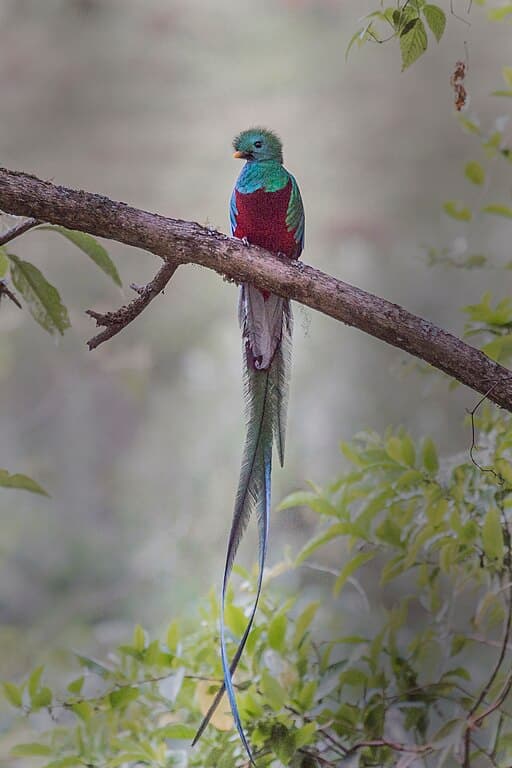
With resplendent as their first name, these birds are without a doubt have a capturing beauty to the eyes. Not different from most cute birds on the list, this one is also known for its colorful plumage. A resemble quetzal has a green body with iridescence from blue-violet to green-gold along with a red breasts. Depending on the light, its feather can shine in different colors such as cobalt, green, lime, yellow, or even ultramarine. These birds have upper tail coverts that hide their tails, and breeding males have tail covers longer than their bodies. They also have primary wing covers that are unusually long which give a fringed appearance.
You can find these adorbs from Chiapas in Mexico to Western Panama where they inhabit montane cloud forests. They also live in open areas and vegetated ravines with scattered pastures and trees as well. As solitary birds, resplendent quetzals usually live alone and only come together in the breeding season. Also, they may gather in big numbers in one tree at the same time when feeding in the midday hours. The adults of this species feed on fruits while the chicks consume some fruits and insects. These birds are very loud, and they are most vocal during calm cloud dawns and misty afternoons. Their population is classified as Near Threatened, and the main threats are habitat loss, hunting for feathers, and trapping for illegal trade.
10Turquoise-Browed Motmot
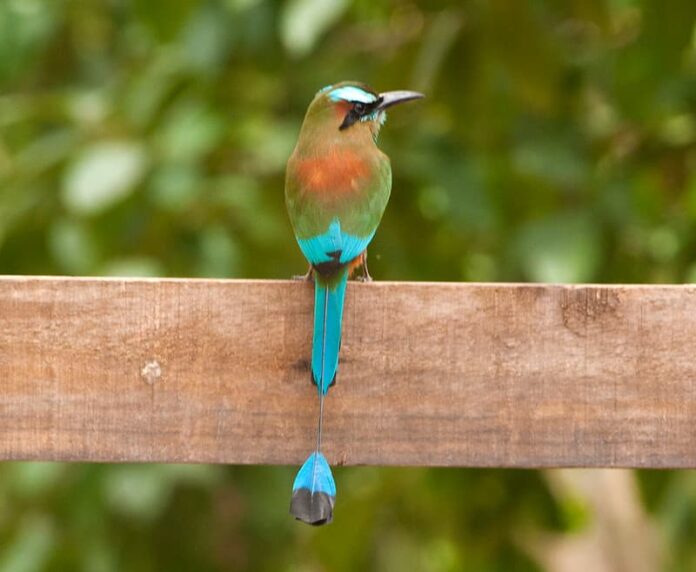
And lastly, we have a medium-sized bird with beautiful coloration and appearance that many people don’t really know much of. The motmot has a mostly green body with a bright blue stripe above the eyes. At the same time, it also has a blue-bordered black patch on the throat that enhance its beauty as well. Both the flight feathers and the upper side of the tail are blue, so identifying one of these is not difficult. Speaking of tails, the males tend to use their tails as a sexual signal during breeding seasons. Simply put, males with longer tails have the best parenting and reproductive success.
Turquoise-browed motmot is common in Central America, and it is a national bird of El Salvador and Nicaragua. They live in fairly open habitats such as forest edges, forest galleries, scrublands, and tropical forests. While most birds build nests with twigs on trees, this species dig burrows on the ground instead. In their habitats, they feed on small insects and reptiles as well as fruits. Some studies have shown that motmots move their tail back and forth in a wag display when they detect predators. As social birds, they either live in pairs or in small groups while nesting in big colonies. Generally, these birds are quiet but they become very vocal during the breeding season. Their population is declining from day to day due to fragmentation and habitat destruction.
Related Post: Cute Animals With Big Ears

